When it comes to choosing the perfect cut of steak, the decision can be overwhelming. Two popular choices are ribeye and sirloin. While both are flavorful cuts of beef, they differ in texture, marbling, and price.
Ribeye is known for its juicy, marbled texture and is often considered one of the tastiest cuts of beef. It is best cooked on high heat and is perfect for those who prefer a rich, flavorful steak.
On the other hand, sirloin is a leaner cut with less marbling and a firmer texture. It is typically less expensive than ribeye and can be cooked on a lower heat for longer. Sirloin is a favorite among health-conscious individuals as it has less fat than ribeye.
In this article, we will explore the differences between ribeye vs sirloin and help guide you in choosing the perfect cut for your next steak dinner.
What Is A Ribeye Steak?
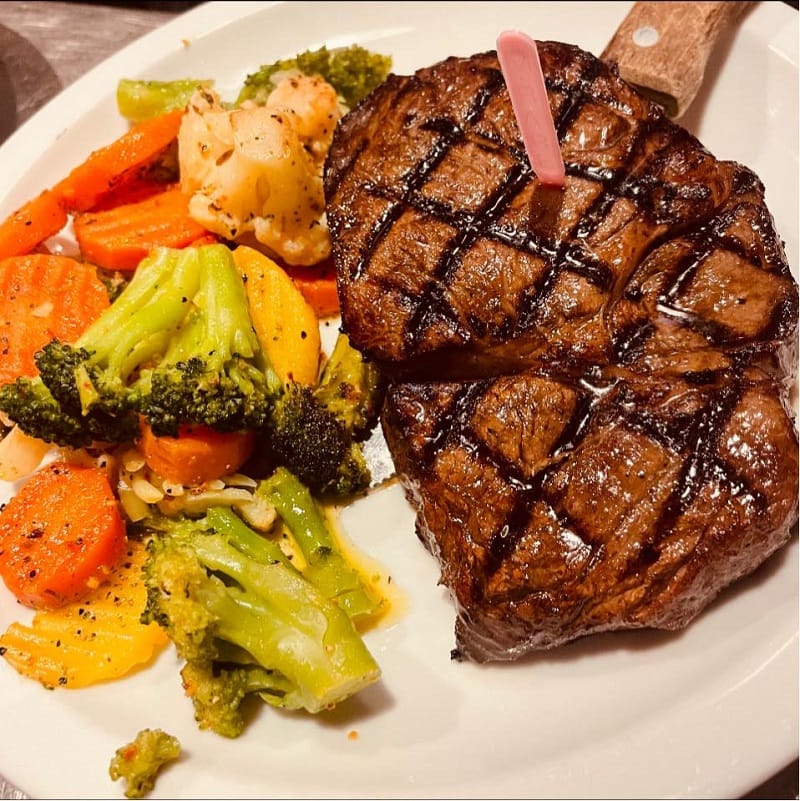
The ribeye steak is one of the most popular and flavorful cuts of beef, and it’s a favorite of both restaurant chefs and home cooks.
The ribeye steak is cut from a section of the beef rib primal. This area is located between the chuck and the short plate. It’s known for its marbling of fat, which gives it a tender texture and great flavor. This marbling also makes it ideal for grilling, pan-searing, and broiling.
The ribeye steak is usually cut into two sections: the cap and the eye. The ribeye cap is cut from the top of the rib primal, the steak’s most tender and marbled part. The ribeye eye is cut from the bottom of the rib primal, and it’s slightly less marbled but still contains a lot of flavors.
When cooking ribeye steak, it’s best to go with a high-heat cooking method. This will help to ensure that the steak is cooked evenly, and it will also help to lock in all of the flavor and juiciness. Grilling, pan-searing, and broiling are all excellent ways to cook a ribeye steak.
For those who want to maximize the flavor of the ribeye steak, it’s best to season it before cooking. A simple combination of salt, pepper, and garlic will bring out the steak’s natural flavor. It’s also essential to let the steak rest after cooking to redistribute the juices throughout the steak.
What Is A Sirloin Steak?
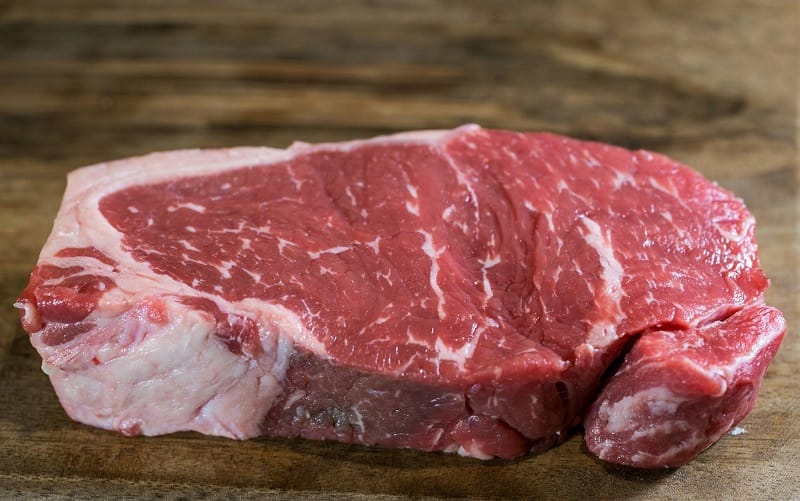
A sirloin steak is one of the most popular cuts of beef due to its affordability and delicious flavor. It is cut from the cow’s rear, from the hip bone to the top of the rib cage. It can be cooked in various ways and is often served in fine dining establishments.
The sirloin steak is one of the most versatile cuts of beef, as it can be cooked in an array of ways. The steak can be grilled, pan-seared, broiled, or served as a steak with sides. It is also a great cut for roasts and stews, as it has a good amount of fat to help keep the food moist and flavorful.
Sirloin steak will be tender and juicy, with a robust flavor when cooked properly. It is generally served medium-rare but can be cooked to any desired doneness. Marinate the steak overnight in red wine, garlic, herbs, and olive oil for the best taste.
Ribeye and Sirloin The Similarities
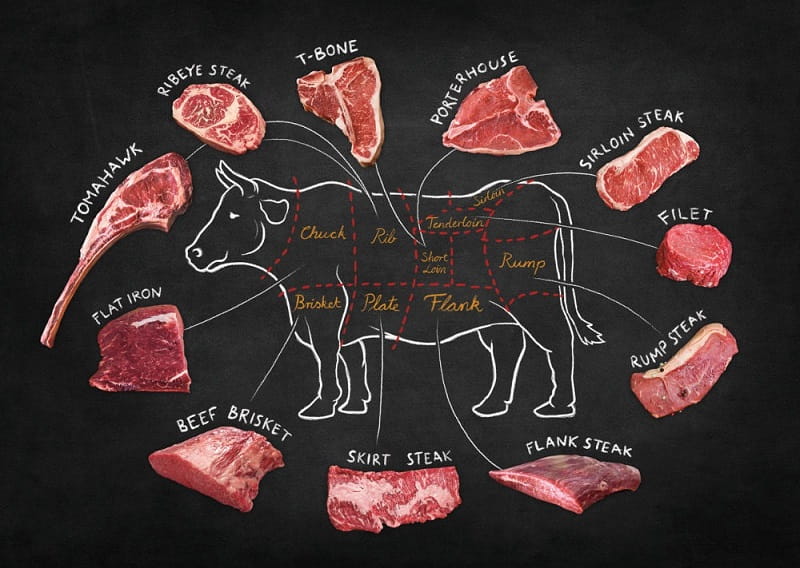
Both ribeye and sirloin cuts of steak come from the same area of the cow, the loin. The sirloin is located in the upper and rear part of the loin, while the ribeye is towards the loin’s front. The loin area of the cow is one of the most prized and expensive cuts, providing excellent flavor and tenderness due to its placement between the shoulder and the hindquarters.
The most obvious similarity between ribeye and sirloin steaks is their marbling. Marbling refers to the white streaks of fat visible in the muscle. This fat adds flavor and moisture to the steak, making it more tender and juicy when cooked. The amount of marbling in each steak can vary, but ribeye and sirloin steaks usually have some marbling.
In terms of flavor, ribeye, and sirloin steaks have a lot in common. Both cuts have a mild and sweet flavor, with ribeye slightly more intense than sirloin. Both cuts of steak are also very tender and juicy, although ribeye is generally considered to be more tender than sirloin.
Regarding cooking, ribeye, and sirloin steaks are best cooked using high-heat methods such as grilling, pan-frying, or broiling. Both cuts of steak can also be cooked in slow-cooking methods such as braising, stewing, and pot-roasting, but ribeye is usually the better choice for these methods since it is more tender.
To sum it up, ribeye and sirloin steaks are both excellent choices for steak lovers. Both cuts of steak have a lot in common, from their marbling and flavor to their ideal cooking methods. If you’re looking for a steak that’s both flavorful and tender, either cut of steak can be a great choice.
Ribeye vs Sirloin: The Differences
The ribeye is known for its marbling, which makes it flavorful and tender. On the other hand, sirloin tends to be leaner and has a firmer texture. Both steaks can be delicious when cooked properly, but it comes down to personal preference. Some people might prefer the juiciness of a ribeye, while others may appreciate the chew of a sirloin. Ultimately, it’s up to the individual to decide which cut they enjoy more.
But, many people are unsure of the differences between these two types of steak, and it’s important to know the differences to make the best choice for your meal. Let’s dive into the main differences between ribeye and sirloin.
Appearance
The most obvious difference between these two cuts of steak is the appearance. Ribeye steaks are easily recognizable by the prominent marble of fat that runs throughout the meat, making for a juicy and flavorful steak. On the other hand, Sirloin steaks are leaner and don’t include fat marbling.
Tenderness And Texture
When it comes to the texture and tenderness of each steak, ribeye is the clear winner. Fat marbling throughout the ribeye steak makes it nicely tender and juicy when cooked, while the leaner sirloin steak is usually slightly tougher to chew.
Flavor
The flavor of each steak is also quite different. Ribeye steaks have a richer, beefier flavor thanks to the fat marbling, while sirloin steaks have a more subtle flavor that’s still quite enjoyable.
Nutritional
When it comes to nutrition, sirloin steaks are the healthier choice. Sirloin steaks are much leaner than ribeye steaks and contain fewer calories, fat, and cholesterol. On the other hand, ribeye steaks are higher in fat and calories but also include more protein, making it a more nutritious option for those looking to pack some extra muscle.
Fat Content
Ribeye is more marbled than sirloin, meaning it has more fat streaks throughout. This extra fat gives ribeye more flavor but causes it to be higher in calories. Sirloin, on the other hand, is leaner and contains less fat.
Price
As you might expect, ribeye is usually more expensive than sirloin because it is a desirable meat cut. Ribeye is usually more expensive per pound, but the bigger portions make up for the extra cost. In comparison, sirloin is usually more affordable.
Ribeye vs Sirloin: Flavor
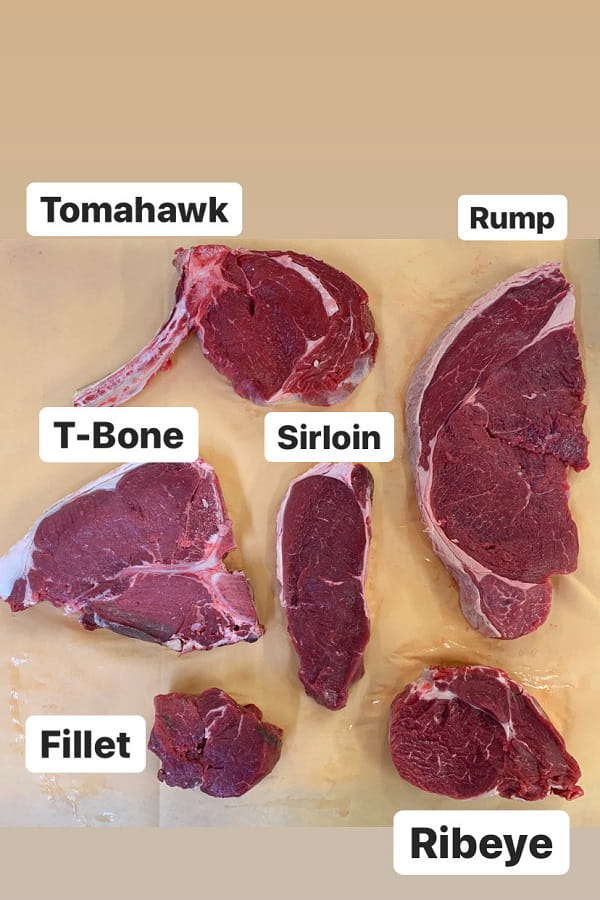
When it comes to flavor, ribeye and sirloin, differ significantly. Ribeye has a richer taste and texture due to its higher fat content. It also has a more intense beefy flavor, making it a popular choice for steak lovers. On the other hand, Sirloin has a slightly more subtle flavor as it is leaner.
Cooking methods
Both ribeye and sirloin can be cooked using a variety of methods. Ribeye is best cooked using high-heat methods, such as grilling or broiling. This will help ensure the fat renders properly, resulting in a juicy, flavorful steak. Sirloin can be cooked using lower-heat methods, such as braising or stewing. This will help to ensure that the leaner cut of meat remains tender.
Sirloin vs Ribeye – Which Beef Cut Is Best for Grilling
When it comes to grilling, ribeye is the better choice. The marbling ensures that it cooks evenly, making it perfect for grilling. The fat content in ribeye also means that it won’t dry out like some other cuts of beef. Sirloin can also be grilled, but it’s best to marinate it first to give it extra flavor and help it retain moisture while cooking.
Which Cut, Ribeye Or Sirloin, Is Better For Grilling?
In my experience, I have found that the ribeye is a better cut for grilling. The high fat content in ribeye helps to keep the meat moist and enhances its flavor during cooking. The marbling in ribeye adds a rich and juicy element to the lean meat. However, I should note that grilling ribeye can be tricky for beginners due to the high-fat content that can be dangerous on a grill. On the other hand, sirloin is a leaner cut that lacks the same degree of marbling as ribeye. While a sirloin steak may not be as tender or flavorful as a ribeye, it is a great option for those looking to reduce their fat intake without sacrificing taste.
Which Cut of Beef Produces the Juiciest Steak – Ribeye or Sirloin?
When it comes to the juiciest steak, ribeye is the clear winner. The marbling in ribeye makes it much more flavorful and juicy than sirloin. It also has a slightly higher fat content, which helps it retain moisture while cooking. Sirloin is still juicy but won’t be as flavorful or juicy as ribeye.
Which Is Better – Ribeye vs Sirloin?
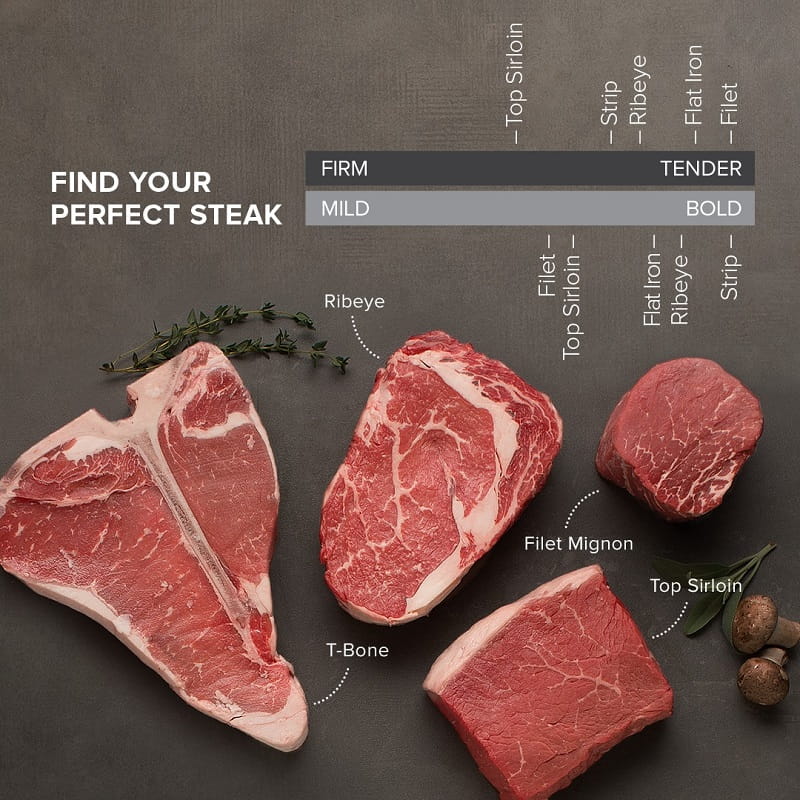
When it comes to taste, it’s a matter of personal preference. Both ribeye and sirloin are great choices for steak, but ribeye is the juicier and more flavorful of the two. However, sirloin is still a great option, especially if you’re looking for a leaner cut of steak.
Read more:
How To Cook Ribeye Steak
The first step to cooking a ribeye steak is selecting the right cut of meat. Ribeye steaks come in two different grades: Prime and Choice. Prime ribeye steaks are considered the highest quality and are usually more expensive. Choice ribeye steaks are the second-highest quality and are more affordable. When selecting a ribeye steak, you want to ensure it is well-marbled, with a good balance of fat and lean meat.
Once you’ve selected the perfect ribeye steak cut, you’ll want to prepare it for cooking. Before cooking your ribeye steak, season it with a generous amount of salt and pepper. This will help enhance the flavor of the steak and keep it juicy and tender. Depending on your preference, you can also add other spices and seasonings to the steak, such as garlic, rosemary, or thyme.
After seasoning your ribeye steak, it’s time to cook it. If you’re grilling your steak, you’ll want to preheat your grill to medium-high heat and oil the grates. Place your steak on the grill and cook for 4-5 minutes per side. Once the steak is cooked to your desired internal temperature, please remove it from the grill and let it rest for at least 5 minutes before slicing.
If you’re cooking your ribeye steak in the oven, preheat your oven to 400 degrees Fahrenheit. Heat a skillet over medium-high heat and add a tablespoon of oil. Once the oil is hot, add your ribeye steak and let it cook for 3-4 minutes per side. Once the steak is cooked to your desired internal temperature, please remove it from the heat and let it rest for at least 5 minutes before slicing.
No matter how you cook your ribeye steak, the most important thing is to ensure it is cooked to the right internal temperature. A medium rare steak is 130-135 degrees Fahrenheit, while a medium steak is 140-145 degrees Fahrenheit. A meat thermometer can ensure your steak is cooked to the right temperature.
How To Cook Sirloin Steak
First, you’ll want to select a high-quality sirloin steak cut. Look for one that’s bright in color and has a substantial marbling of fat throughout the meat. This will help to ensure that the steak is juicy and flavorful.
Once you’ve got your steak, you’ll want to season it generously with salt and pepper. This will help the steak retain its juices and will also add a nice flavor to the steak.
Next, you’ll want to heat your pan on the stove. Use a high-heat setting, as sirloin steak is best cooked on high heat. When the pan is hot, add a little oil or butter, then place the steak.
Now, you’ll need to cook the steak for a few minutes on each side. This will depend on the thickness of your steak and how you like your steak cooked. Generally speaking, a medium-rare steak should be cooked for about four minutes on each side.
When the steak is cooked to your desired doneness, take it out of the pan and transfer it to a plate. Let it rest for a few minutes before serving, as this will help to redistribute the juices and make them even more tender.
How Do You Know When A Ribeye Or Sirloin Is Cooked To The Desired Doneness?
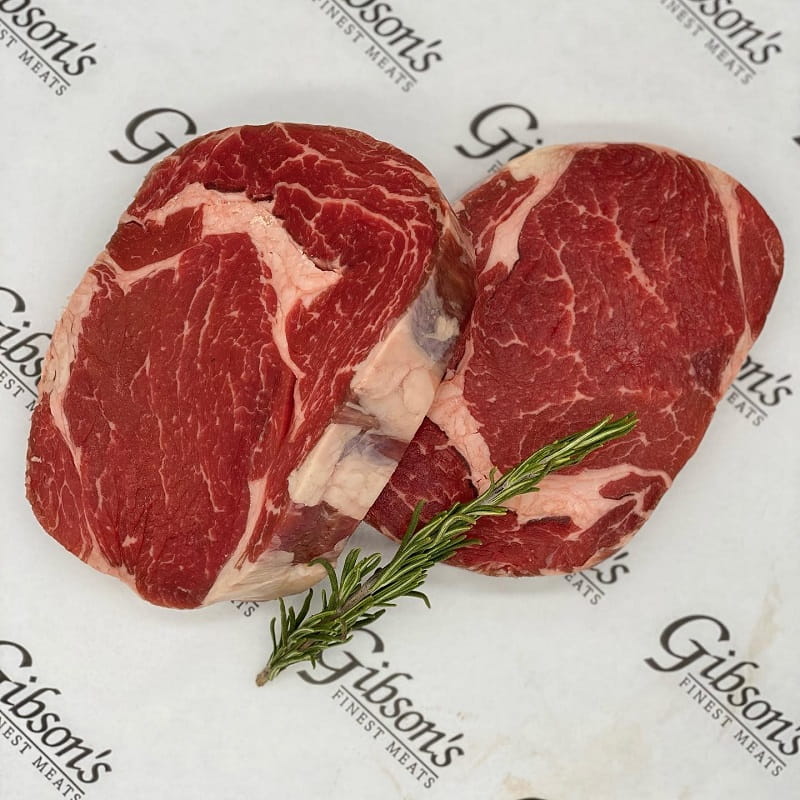
The key to knowing when a ribeye is cooked to the desired doneness is to monitor the steak’s internal temperature. A rib eye is considered rare when it reaches an internal temperature of 120 degrees Fahrenheit (49 degrees Celsius). A medium-rare ribeye is ready at 130 degrees Fahrenheit (54 degrees Celsius), and a medium ribeye is done at 140 degrees Fahrenheit (60 degrees Celsius). It is considered well done when a ribeye reaches 160 degrees Fahrenheit (71 degrees Celsius).
- A meat thermometer is the most accurate way to determine the internal temperature of a steak. You can use the touch test if you don’t have a meat thermometer. Gently press on the steak with your finger or the back of a spoon. A rare steak should feel soft and tender, while a medium-rare steak will feel slightly firmer. A medium steak will feel slightly firmer than a medium-rare steak, and a well-done steak will feel firm throughout.
- The look of the steak is also a good indicator of doneness. A rare steak will be brown on the outside with a vibrant red center. A medium-rare steak will be brown on the outside with a pink center. A medium steak will be brown on the outside, with a light pink center, and a well-done steak will be brown on the outside, with no pink in the center.
- Finally, the smell of the steak can also be used to tell when it is cooked to the desired doneness. A rare steak will have a mild smell, while a medium-rare steak will have a slightly stronger smell. A medium steak will have an even stronger smell, and a well-done steak will have a distinct smell.
To determine if a sirloin is cooked to the desired doneness, it is important to understand the three stages of doneness: rare, medium-rare, and well-done. When a steak is cooked too rarely, it should be lightly browned on the outside and will be pink but still slightly raw in the center. A medium-rare steak should look similar to rare but will be slightly darker and still have a bit of pink in the center. Well-done steaks will be fully browned on the outside and will have no pink in the center.
- The easiest way to tell if a sirloin steak is cooked to your desired doneness is to use a meat thermometer. Insert the thermometer into the center of the steak and look for the temperature reading. For rare steaks, look for an internal temperature of about 130 degrees Fahrenheit. For medium-rare steaks, the internal temperature should be about 140 degrees Fahrenheit. Finally, the internal temperature should be about 150 degrees Fahrenheit for well-done steaks.
- If you don’t have a meat thermometer, you can test the steak’s doneness by pressing it with a finger. Rare steaks will be soft and will spring back, while medium-rare steaks will be firmer and will show some resistance. Well-done steaks will be firm and won’t spring back when pressed.
Does The Origin Country/Region Impact Quality, Flavor, And Texture Differences Between Ribeyes And Sirloins From Different Parts Of The World (E.g., Us Vs Australia)?
When it comes to the quality, flavor, and texture of ribeyes and sirloins from different parts of the world, the origin country/region can have an impact. Depending on the region, you may experience variations in the texture, flavor, and quality of these cuts of steak.
For example, when it comes to beef from the United States, ribeyes and sirloins tend to be more flavorful and tender, with a richer fat marbling. This is because American cattle are typically fed a high-energy diet and are finished on grain, which helps to produce a higher quality and more flavorful beef. In contrast, Australian beef tends to be leaner, with less marbling and a much firmer texture.
The flavor and texture of the beef can also be affected by the region it is produced in. For example, in the United States, most ribeyes and sirloins come from the Midwest and the South, where cattle are typically grain-fed for a longer period. In Australia, the majority of beef typically comes from the North and West, where grass-fed cattle are more common. The grass-fed beef tends to be slightly leaner and has a different flavor profile.
In addition to the region, the breed of cattle can also affect the flavor, texture, and quality of ribeyes and sirloins. In the United States, Angus and Hereford’s cattle are popular for producing high-quality beef, while in Australia, the Angus and Charolais breeds are more popular.
Should You Choose Ribeye or Sirloin for a Special Occasion Meal?
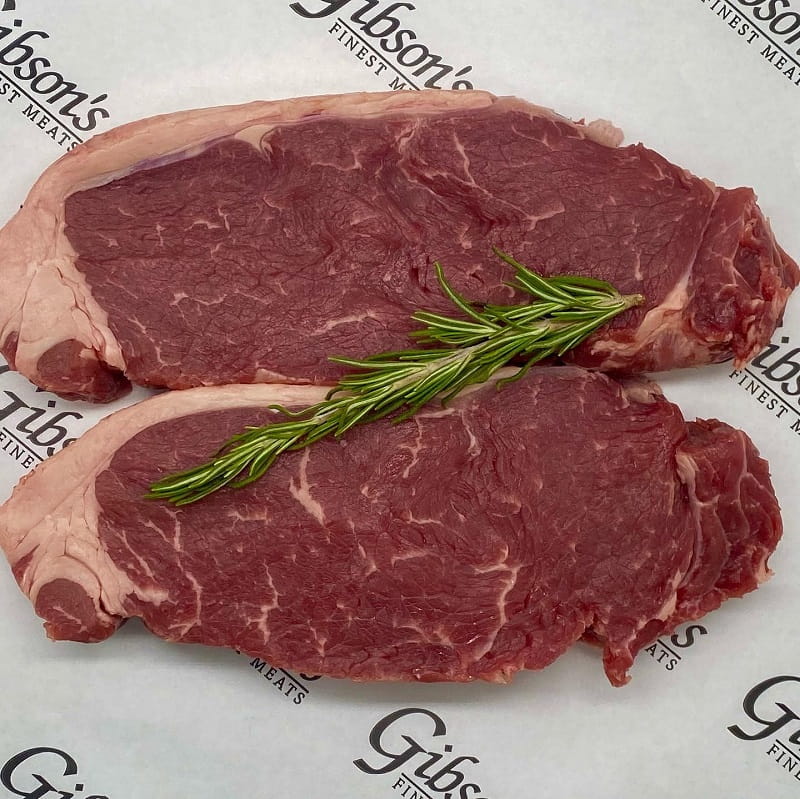
Are you planning a special occasion meal and wondering which cut of beef to serve? If so, you’re in the right place! We’ll help you understand the differences between ribeye and sirloin so that you can make the best decision for your meal.
Ribeye steak is known for its rich marbling, which imparts a bold flavor and juicy texture. It’s considered a superior cut of beef, and some consider it the best steak for grilling. Ribeye steak is also one of the most expensive cuts of beef, which makes it a great choice for a special occasion meal.
Sirloin steak is a more affordable option. It is leaner than ribeye but still has good flavor. Sirloin steak is also more versatile, as it can be cooked using various methods. It is a great option for grilling, pan-frying, and even roasting.
When choosing between ribeye and sirloin, it comes down to personal preference. Ribeye is the more expensive option but also the more flavorful. Sirloin is more affordable and versatile, but it lacks the rich flavor of ribeye. Ultimately, deciding which cut is best for your special occasion meal is up to you.
No matter which cut you choose, buying the best quality beef you can find is essential. Look for beef that’s been aged and has a nice marbling of fat. Also, make sure to season your steak properly. A simple combination of salt, pepper, and garlic powder will do the trick.
When it comes to grilling or pan-frying, the key is to get a good sear on the steak. This will help to lock in the flavor and keep the steak juicy. When roasting, make sure not to overcook your steak. You want it to be tender and juicy, not dry and tough.
What Factors Should I Consider When Purchasing Ribeye Or Sirloin?
- Quality: Both ribeye and sirloin steaks can be of high quality, but it’s important to consider factors such as marbling and tenderness. Look for ribeye steaks that have abundant marbling, as it adds juiciness and flavor. Sirloin should have a moderate level of marbling.
- Flavor: Ribeye is known for its rich and intense flavor due to the high amount of fat marbling. It offers a melt-in-your-mouth experience. On the other hand, sirloin has a slightly leaner taste but still delivers great flavor. Consider your preference for a more indulgent flavor or a slightly healthier option.
- Tenderness: Ribeye steaks are famous for their tenderness, as the fat content imparts a buttery texture. Chewing requires minimal effort, making it a popular choice among steak lovers. Sirloin is slightly less tender, but if it is cooked and prepared properly, it can still offer excellent tenderness.
- Cooking methods: While ribeye and sirloin are versatile and can be cooked using various methods, they may have different cooking requirements. Ribeye steaks are thick and well-suited for grilling, pan-searing, or broiling. Sirloin can also be cooked in similar ways, but it is important to avoid overcooking as it can become tough.
- Price: Ribeye tends to be more expensive than sirloin due to the higher fat content and tenderness. Consider your budget and the occasion when choosing between the two. Ribeye is often reserved for special occasions or when you want to treat yourself, while sirloin can be a more affordable option for regular consumption.
- Portion size: Ribeye steaks are typically larger and thicker, making them suitable for those who prefer a heartier portion. Ribeye might be the better choice if you have a bigger appetite or are serving a crowd. Conversely, Sirloin is often smaller and can be a great option for those who prefer a more moderate portion.
- Health considerations: If you are conscious of your fat intake, opting for sirloin might be a better choice. It has a lower fat content than ribeye, making it leaner. However, it is important to note that both steaks can still contribute to a balanced diet when consumed in moderation.
Which Steak Cut Is More Commonly Used in Famous Restaurant Menus – Ribeye or Sirloin?
It turns out the answer may come down to personal preference. While both cuts have unique qualities, the rib eye is a more popular choice due to its luscious marbling and buttery flavor.
However, leaner sirloin may be a better option for those watching their fat intake. Ultimately, it’s up to the individual restaurant and their chefs to decide which cut to feature on their menu. Regardless, steak lovers can find satisfaction in either cut if prepared correctly.
FAQs About Ribeye vs Sirloin
What Are The Typical Characteristics Of A Ribeye Steak?
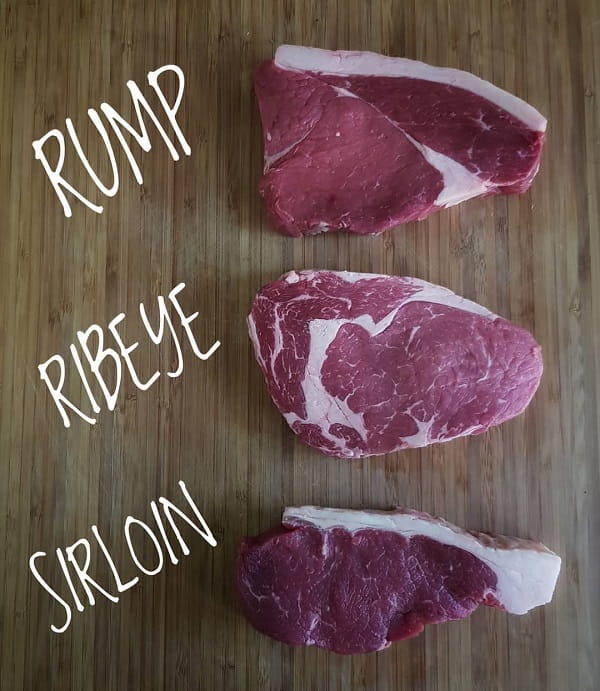
The ribeye might be the perfect choice if someone is looking for a steak packed with flavor. This is because the rib primal, cut from the ribeye, contains abundant fat that melts during cooking to create a succulent and juicy texture.
The ribeye is typically taken from the best center portion of the rib steak and is a boneless cut that ranges between 9oz and 12oz in weight. Its taste tends to be richer than other cuts, and it is known for its tender texture.
One of the unique characteristics of the ribeye is the chunk of fat in the middle, which adds to its delicious flavor. The ribeye is a popular cut of meat for pan-searing, making it an excellent choice for those who love to cook at home.
Is It Better To Purchase Pre-Cut Steaks Or Buy The Whole Muscle Cut And Cut Into Steaks Yourself?
It is generally better to purchase the whole muscle cut and cut it yourself because it offers more control over the thickness and size of the steaks, and it tends to be more affordable. However, it requires a good knife and some skill in butchering.
On the other hand, pre-cut steaks are convenient and readily available, but they may be more expensive and not necessarily of the same quality as cutting your steaks. Ultimately, the choice depends on personal preference and circumstance. But for those willing to invest the time and effort, buying the whole muscle cut and cutting it into steaks yourself can provide a more customized and cost-effective steak experience.
Are Any Ingredients That Pair Particularly Well With Either Type Of Steak When Preparing Dishes Such As Stir-Fry Or Fajitas?
When preparing dishes such as stir-fry or fajitas, ribeye and sirloin are great cuts of beef to use. It’s been noted that bell peppers work well with both cuts of beef, as they add a nice crunch and refreshing flavor to the dish.
For seasoning, a mix of salt and pepper, chili powder, smoked paprika, garlic powder, dried oregano, and red pepper flakes can be used for ribeye and sirloin. Lime juice is also a great addition, as it adds a pleasant tang to the dish’s overall flavor. In terms of the type of cut, flank steak is a popular choice for fajitas, but top round or rump can also work well.
How Can I Cook Sirloin To Ensure It Remains Tender Without The High Fat Content Of Ribeye?
One option is to use a meat mallet to break down the tough fibers of the steak manually. Another is to marinate the steak, which not only tenderizes it but also infuses it with flavors. You can also try using an enzyme-based or meat tenderizer tool with blades to further break down the tough fibers. Giving the steak a good sear on a hot pan or grill can also help to make it tender and lock in flavors. Just be careful not to overcook it, as that can make it tough. And remember, buying high-quality sirloin from a trusted source can also make a difference in tenderness.
Conclusion
So, the question remains: Ribeye vs Sirloin, which cut of beef reigns supreme? The answer is subjective and depends on your personal preference. Ribeye is a great choice for those who want a rich and bold flavor, while sirloin is a great option for those who prefer a more subtle taste.
No matter which cut you choose, we guarantee you’ll be pleased with the deliciousness of either ribeye or sirloin! So, why not try both and see which one reigns supreme in your taste test showdown?
References:
- https://beef2live.com/story-popular-steak-cuts-served-restaurants-0-104005
- https://www.thespruceeats.com/rib-eye-steak-overview-and-tips-336255

Hey readers! Chip Holland here, and I’m a Manager of this website. My passion for writing about it only matches my passion for BBQ. Follow my blog for mouth-watering recipes, tips, and tricks for the perfect smoke, grill, and BBQ. I’m sure you won’t be disappointed!
